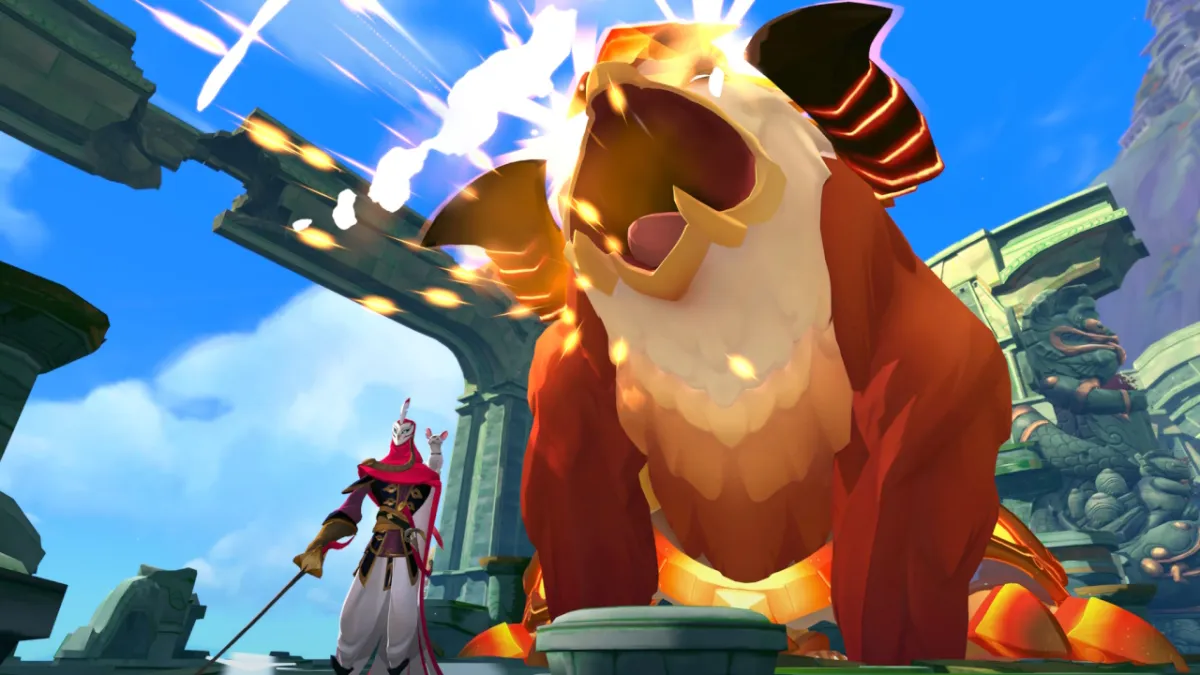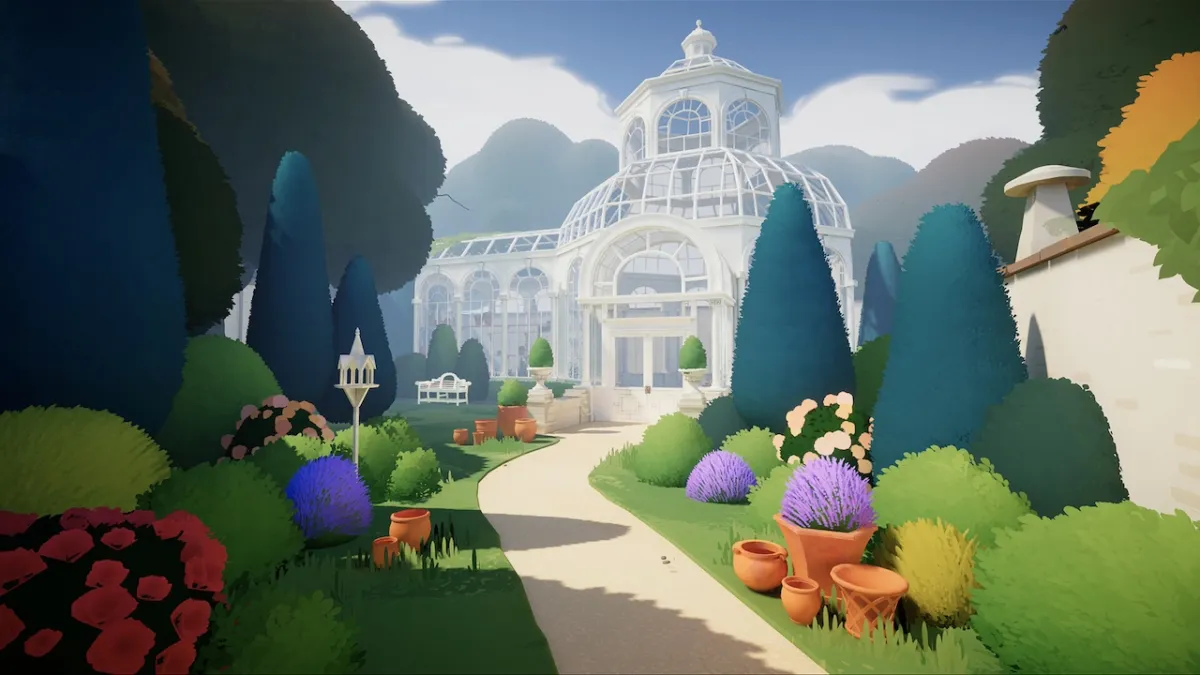Sometimes in gaming, a series of unfortunate events causes a completely bizarre moment. This may be experienced in a FPS, when a soldier is obliterated, only for his body to spasm uncontrollably before crumpling into a puddle of flesh. Or in racing games, when you spin out only to respawn as a flashing mesh that ghosts the outside of an opponent’s chassis. These are moments that, for better or worse, we can’t really escape. After all, you’re playing a game.
Grand Slam Tennis 2 provided me with one of these moments. Jumping into my first match, I enthusiastically pitted John McEnroe against Pat Cash. As the action began, antics off the court appeared to mimic my choice of match-up. Sat in the commentary box is none other than John McEnroe and Pat Cash. For a brief moment, I celebrated the fact that Tim Henman and Greg Rusedski aren’t featured in the game, the possibility of listening to their equally unsuccessful drivel hiding itself for the good of mankind.
Sure, this was an unlucky moment, and one that doesn’t harm Grand Slam Tennis 2 as a product, but it’s the kind of inclusion that sums up the game’s lack of spark and its ability to get things slightly wrong.
This might be incredibly harsh, as for the most part, EA have produced an accomplished tennis title. After the success of the Wii-exclusive original, there was never any doubt the sequel would make its way across to the other consoles for a HD debut. The first title was a forerunner of the Wii MotionPlus controller, an accessory that came bundled with the game. Although the PlayStation 3 version of this sequel includes Move support, Xbox 360 users don’t get the chance to play with Kinect. For now, this isn’t much of a problem.
One of this game’s most striking features is just how ‘EA’ it all feels. The menu template has been copy and pasted from their other sports game franchises, offering a sense of familiarity that begins to grate. It’s a decent system, but one that doesn’t have much life left in it: there’s no instantly playable arena mode to engage you like there is with FIFA 12, and it doesn’t have the same zip as its football-ing brother.
That said, the simplicity places an emphasis on getting gamers onto the court. It’s unfortunate, then, that this title sits uncomfortably between the arcade goodness of Virtua Tennis 4 and the precision shots that make Top Spin 4 such a firm favourite.
On the court, proceedings are remarkably user-friendly. Many will favour the classic control scheme that maps each shot to a different button. This makes it extremely easy to produce consistently strong and accurate shots, allowing an answer to anything your opponent launches at you. As with their Fight Night and Skate franchises, EA have also implemented a control scheme that utilises the right stick, this time known as Total Racquet Control. It’s hardly easy to pick-up-and-play, but after a while is a fun alternative to a set-up that most players will feel instantly at home with.
By moving the stick in certain directions, quite unsurprisingly, a corresponding shot will hit that side of the court. Triggers are used to distinguish between drop shots and lobs, both of which still need a precise swipe to pull off effectively. Although this style isn’t a bad inclusion by any means, it can be a little taxing on the hands. The process of moving the left stick while timing a shot with the right stick, alongside pulling a trigger, will often amount to confusion.
Add in the fact you need to consider power at the same time, and it all becomes a little too ambitious Certainly nothing to be ashamed of here, but at this stage, Grand Slam Tennis 2’s Total Racquet Control has the same impact as Total Punch Control did in Fight Night 2004. Inventive, intriguing, but plenty of room for improvement.
Even on the toughest difficulty, EA have been sure to dial down the intensity of this one. At the easier end of the scale, your opposites will hardly even break sweat, letting balls run out of play for a simple point in your favour. They’ll play balls back to you while leaving huge gaps open, making for a completely boring contest. The most accomplished challenge comes from Superstar difficulty, and it’s massively disappointing that a large proportion of players will still find this rather comfortable.
Each licensed star, from Nadal to Sampras, seems to lose their tactical awareness on this setting, aggressively attacking the net instead. It’s naïve from EA, as they effectively eliminate strategy, replacing it with a noticeable ‘cheapness’.
The fact is, once your opponent storms to the net, you’ll have very little chance of getting the ball past them. Lobs and power shots down the line fail to do the trick, meaning they’ll pretty much win the point every time. Stop them from getting to the net, and the acclaim will be yours. This kind of obvious play often leaves any surprise and excitement in the changing room.
For those wanting to put some serious time into Grand Slam Tennis 2, the toughness of the 10 year career mode is equally as baffling. Each year the game will put you up a level until you reach Superstar difficulty. In the first year, this means it’s pretty much impossible not to win all 4 Grand Slam titles. Djokovic, Federer, Murray, they will all fall to the might of your power; pretty ridiculous when consider their statistics alongside your created characters rating of 35. As the years roll on, you’re more likely to become less successful, a realisation that makes it pointless to play on after the first.
If you need to improve any aspect of your overall play, an irritating training mode is available at any time. McEnroe is used to squawk orders and consistently lambast you for making mistakes, an inclusion that’s rather embarrassing. A scenario mode appears in the form of ESPN Grand Slam Classics, but again, these are too easy to be much fun. All the shortcomings are brought to a head by the online play which suffers an uneasy amount of lag at this early stage. When this is improved upon, expect it to be a big hit, as it seems the game benefits from human-on-human competition.
EA have managed to secure licenses for all 4 Grand Slam tournaments, the only game that currently does. The roster is a decent build of classic and current talent, but does leave a lot to be desired away from the male side of the game. In fact, many of the top female players have been left out, with Venus and Serena Williams leading the charge alongside Sharapova. Not the best, but it’ll do.
Underneath it all, this really isn’t a terrible first outing on the 360. It’s fair to say EA have been a little naïve in their execution, perhaps never getting away from the casual audience the original game aimed to please. In doing so, plenty of players will feel alienated as the title never offers a significant challenge. With that said, it doesn’t play a bad game of tennis, and future potential is obvious from the outset. Right now, Grand Slam Tennis 2 echoes the debut of the Fight Night series, a franchise that has consistently galvanised its quality. Would you bet against EA to do this again?
Read Article Infection Free Zone review – Zombies in your backyard

Rating:
7.5

Category:
Reviews
Infection Free Zone review – Zombies in your backyard


